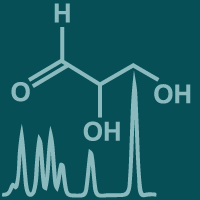Topic Menu
► Topic MenuTopic Editors


Advances in Bioinformatics and Computational Biology of Human Disease
Topic Information
Dear Colleagues,
In today's big-data era, the exponential growth of information due to the latest advancements in high-throughput technologies is indisputable. Therefore, efficient algorithms and tools for the extraction, analysis, exploration, and representation of biological information are necessary. In this regard, we invite investigators to contribute original bioinformatics research and review articles describing novel methods, algorithms, software applications, web services, and workflows that are able to cope with larger datasets, complexity, and new datasets or databases which integrate information from different sources. Submissions across the entire spectrum of life and biomedical sciences are welcomed.
Dr. Ioannis Michalopoulos
Dr. Georgios A. Pavlopoulos
Topic Editors
Keywords
- genomics
- sequence analysis
- gene expression
- structural bioinformatics
- gene regulation
- proteomics
- metabolomics
- biological networks
- data visualization
- data integration
- AI/ML
- personalized medicine
- meta-analysis
- cancer research
- disease research
Participating Journals
| Journal Name | Impact Factor | CiteScore | Launched Year | First Decision (median) | APC |
|---|---|---|---|---|---|

Biology
|
3.5 | 7.4 | 2012 | 17.4 Days | CHF 2700 |

BioTech
|
3.1 | 4.8 | 2012 | 22.3 Days | CHF 1600 |

Cells
|
5.2 | 10.5 | 2012 | 16 Days | CHF 2700 |

Genes
|
2.8 | 5.5 | 2010 | 14.6 Days | CHF 2600 |

Metabolites
|
3.7 | 6.9 | 2011 | 14.4 Days | CHF 2700 |

Preprints.org is a multidisciplinary platform offering a preprint service designed to facilitate the early sharing of your research. It supports and empowers your research journey from the very beginning.
MDPI Topics is collaborating with Preprints.org and has established a direct connection between MDPI journals and the platform. Authors are encouraged to take advantage of this opportunity by posting their preprints at Preprints.org prior to publication:
- Share your research immediately: disseminate your ideas prior to publication and establish priority for your work.
- Safeguard your intellectual contribution: Protect your ideas with a time-stamped preprint that serves as proof of your research timeline.
- Boost visibility and impact: Increase the reach and influence of your research by making it accessible to a global audience.
- Gain early feedback: Receive valuable input and insights from peers before submitting to a journal.
- Ensure broad indexing: Web of Science (Preprint Citation Index), Google Scholar, Crossref, SHARE, PrePubMed, Scilit and Europe PMC.

